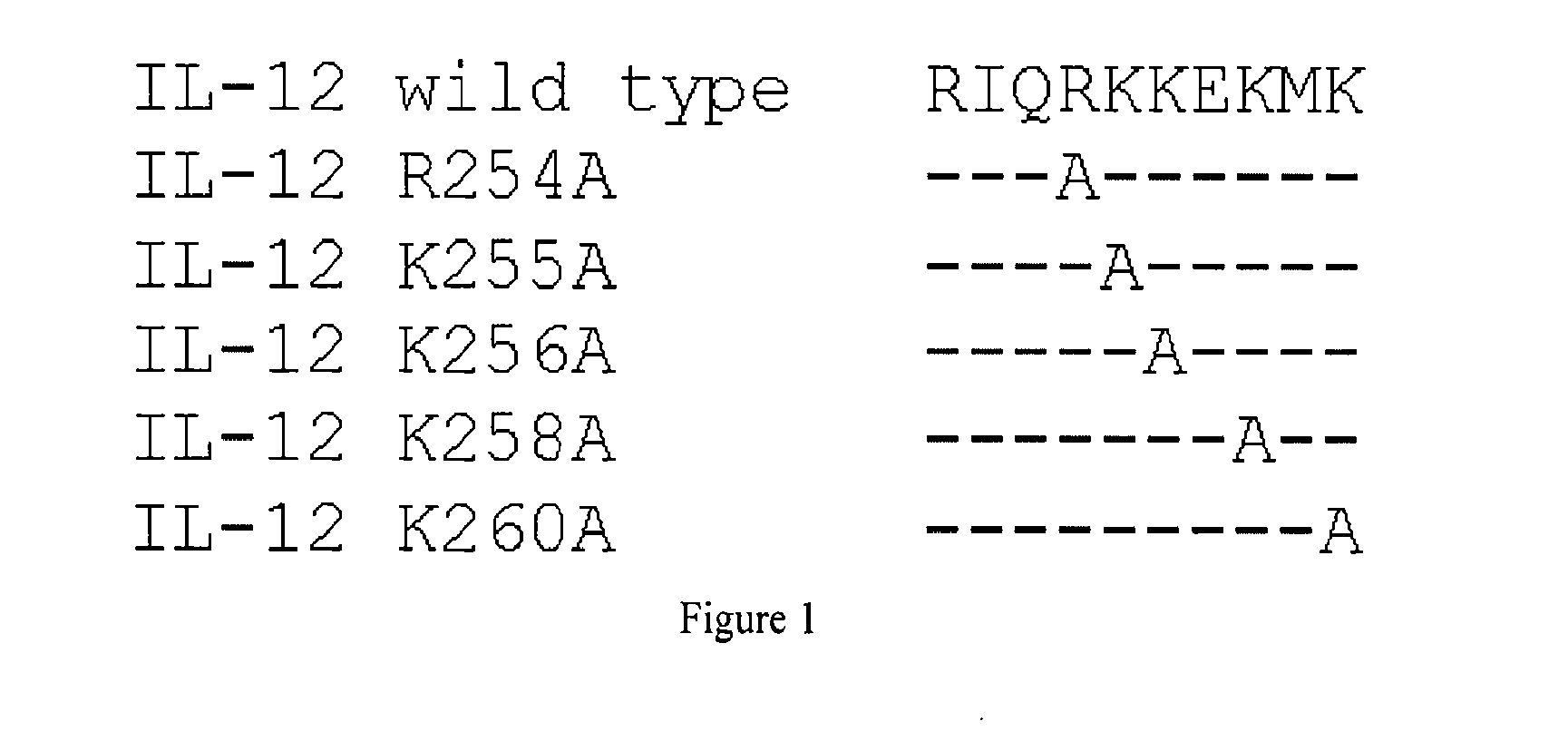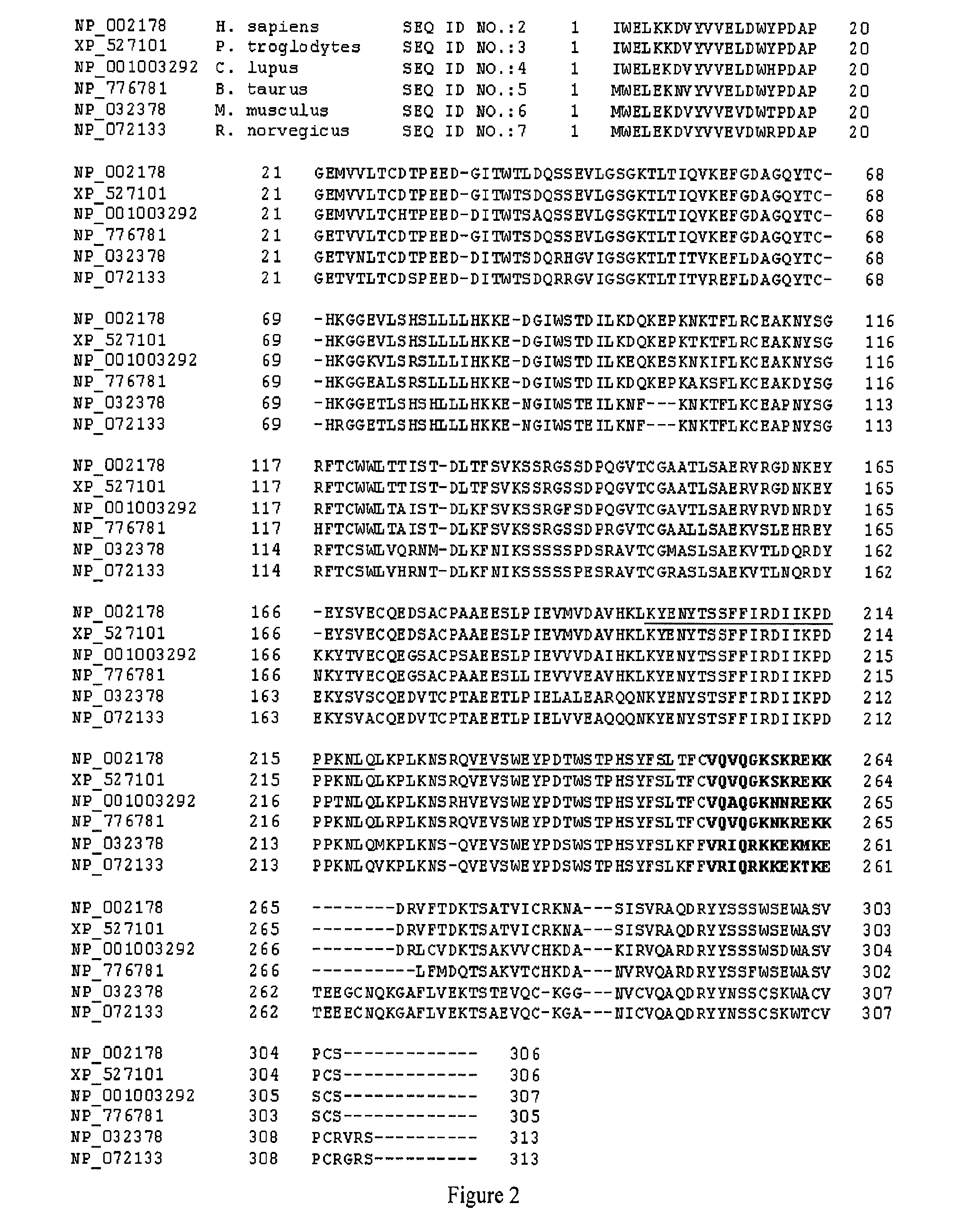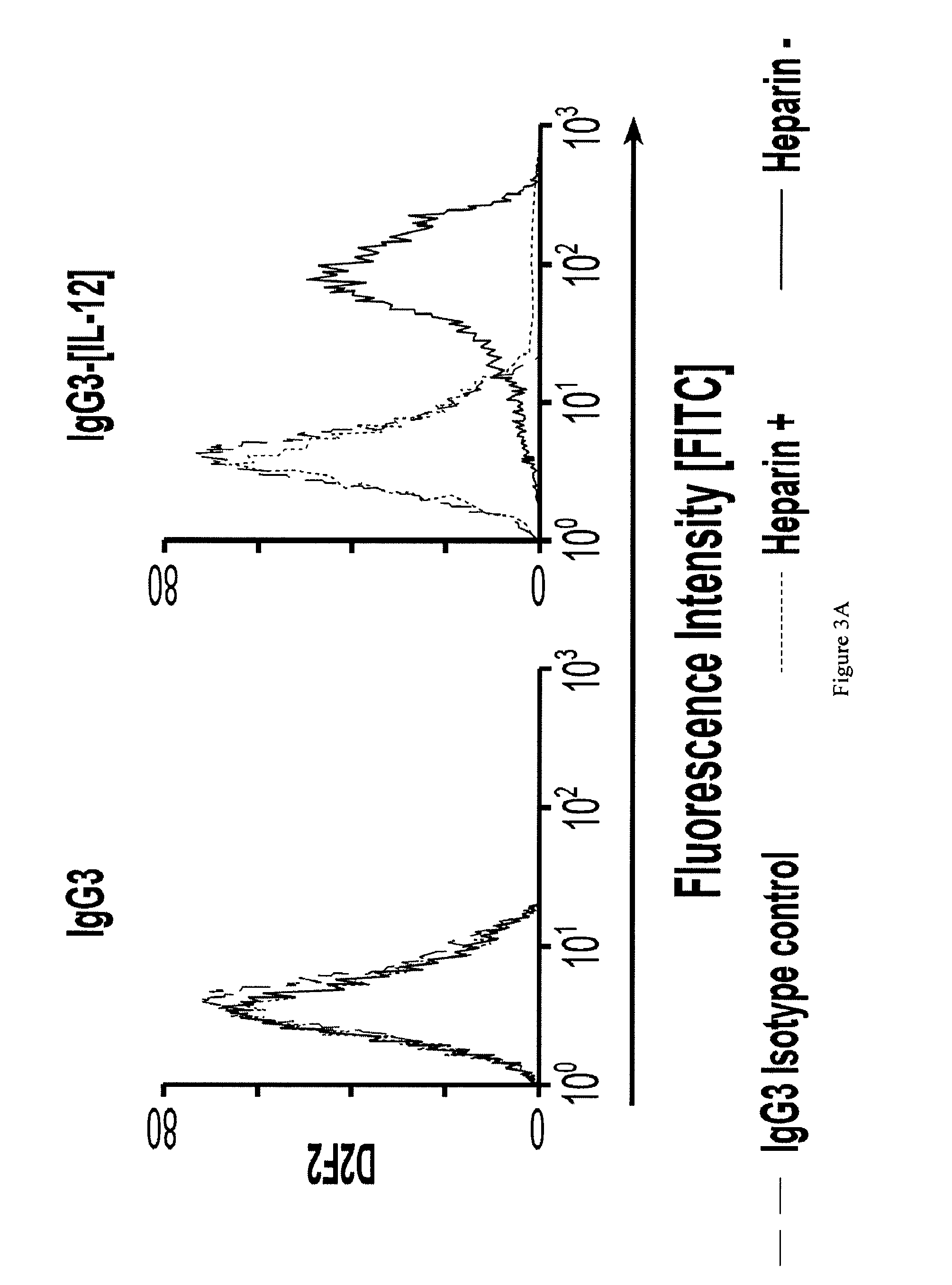Antibody Fusion Proteins with Disrupted Heparin-Binding Activity
a fusion protein and activity technology, applied in the field of polypeptides, can solve the problems of severe toxicity and unfavorable side effects, and achieve the effect of reducing the ability of the cytokine sequen
- Summary
- Abstract
- Description
- Claims
- Application Information
AI Technical Summary
Benefits of technology
Problems solved by technology
Method used
Image
Examples
Embodiment Construction
[0041]The present invention provides polypeptides comprising an antibody sequence linked to a cytokine sequence which exhibit a reduced ability to bind a heparin compound. In particular, the cytokine sequence is a modified, e.g. mutated, cytokine sequence which exhibits a reduced ability to bind a heparin compound as compared to the corresponding wild type cytokine which may or may not be similarly linked to an antibody sequence. The antibody sequence may be linked to the cytokine sequence by a covalent bond or a non-covalent bond. In some embodiments, the antibody sequence may be linked to the cytokine sequence with a linker known in the art. In some embodiments, the linker may be one or more amino acid residues. In some embodiments, the antibody sequence may be directly fused to the cytokine sequence using methods known in the art.
[0042]As used herein, a “heparin compound” includes glycosaminoglycans (GAG) such as heparin, heparan sulfate (HS), heparan sulfate proteoglycan (HSPG),...
PUM
| Property | Measurement | Unit |
|---|---|---|
| size | aaaaa | aaaaa |
| concentration | aaaaa | aaaaa |
Abstract
Description
Claims
Application Information
 Login to View More
Login to View More - R&D
- Intellectual Property
- Life Sciences
- Materials
- Tech Scout
- Unparalleled Data Quality
- Higher Quality Content
- 60% Fewer Hallucinations
Browse by: Latest US Patents, China's latest patents, Technical Efficacy Thesaurus, Application Domain, Technology Topic, Popular Technical Reports.
© 2025 PatSnap. All rights reserved.Legal|Privacy policy|Modern Slavery Act Transparency Statement|Sitemap|About US| Contact US: help@patsnap.com



